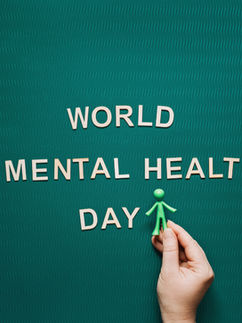The High Seas in High Demand: UN Treaty Overview
- Young Diplomats Society
- Apr 5, 2023
- 4 min read
Matthew C Thorn

In the early hours of Sunday 5 March, a heavy decade of stagnant international negotiations lifted from the shoulders of Singapore’s Rena Lee, UN Ambassador for Oceans. Lee could finally share that the legally binding agreement to protect 30% of the world’s land and sea by 2030 had landed, building on Cop21’s 30 by 30 initiative. “The ship has reached the shore” she announced, with hands quickly covering her face in exhaustion and celebration, if not relief. A standing ovation, grand applause and even cheers filled Room 2 of the UN headquarters… to the edification of all! For besides the momentous achievement, impatiently gathered Model UN university debaters noted a slight odour emanating from the bleary-eyed (real) delegates staggering out of the final 48 (frantic and sleepless) hours’ extension to the fortnight’s negotiations. No doubt all delegates rested deeply assured that the temporary displacement of NMUN preparations served such a high purpose; but will the treaty realise its ambitions? And why has it taken so long?
The High Seas: A World Beyond Borders
The agreement under the United Nations Convention on the Law of the Sea on the conservation and sustainable use of marine biological diversity of areas beyond national jurisdiction (draft publicly available here), or High Seas Treaty, establishes protections in areas beyond national jurisdiction (ABNJ). Since the 1980s, seas which lie beyond any one country’s exclusive economic zone (EEZ) have been governed by the United Nations Convention on the Law of the Sea (UNCLOS) rather than by a particular sovereign legal system and became known as the ‘high seas.’ However, so far they are a lawless and vulnerable place. The High Seas Treaty will complement UNCLOS and fill some gaps by providing additional rules and guidelines for the conservation and sustainable use of marine biodiversity in ABNJ.
The high seas constitute two thirds of our world’s oceans. The global community has found this vast expanse to hold invaluable riches, as well as facilitating fishing, shipping, and scientific research opportunities. Nevertheless, the high seas face escalating challenges including overfishing and pollution which are upsetting vital balances of ecosystems near and far. Will (in)action taken by international actors in the high seas—by way of cascade effect or more hopefully umbrella effect—not inevitably impact the harmony of economies and lives of all people(s)?
The High Seas Treaty creates a framework for long-term management of marine biodiversity in ABNJ by addressing four key issues: (1) marine genetic resources, (2) protected areas, (3) environmental impact assessments, and (4) capacity building and technology transfer. These issues have been identified by the European Union as central to the conservation and sustainable use of marine biodiversity in the high seas.
Marine Genetic Resources
Agreeing on a universal approach to regulating marine genetic resources (MGRs) in ABNJ through the High Seas Treaty has proven the most challenging aspect of negotiations over the past decade. MGRs are the genetic material found in marine organisms, such as bacteria, algae, and animals: a valuable part of the economic system related to marine life—known as the ‘blue economy’—for its potential to develop new drugs and industrial products. The High Seas Treaty provides a framework for equitable distribution of benefits derived from MGR exploitation, but this was hotly contested in the negotiations: most parties tugging the proverbial fishing net their way for a ‘fairer’ share. The EU is providing significant funding upfront, but Global North countries have agreed to additional financial contributions only after seeing the results of further commercialisation. The Global South (comprising 85% of the world’s population) continues by way of the treaty to seek greater inclusion in the “common heritage” of the high seas’ blue economy. Discoveries of lucrative chemotherapy medicine Halaven and antiviral medication such as Remdesivir (widely used to treat Covid-19) provide examples of returns from high seas research. To gauge the success of this treaty, a key measurable will be whether medical products (and their proceeds) derived from high seas research and development are hoarded or shared.
Marine Protected Areas
Another significant component of the High Seas Treaty is the establishment of marine protected areas (MPAs) in ABNJ. MPAs are areas set aside for conservation purposes, where human activities are restricted or prohibited. This is crucial for the conservation of marine biodiversity as it provides a refuge for marine species and habitats. An issue to watch on this front are the Exit Options negotiated by Russia and China that allow regions to no longer be bound by the treaty should geo-political tensions escalate in the Arctic and China Sea.
Environmental Impact Assessments
The High Seas Treaty will also require environmental impact assessments (EIAs) to be conducted before any human activity is undertaken in ABNJ. EIAs are a critical tool for assessing the potential impacts of human activities on the environment, and they help ensure activities are carried out in a sustainable manner. The High Seas Treaty will require that EIAs are conducted for activities such as deep-sea mining, fishing, and shipping, though it remains as yet unclear how this initiative will cooperate with existing regional regulators of fishing, mining and research in ABNJ .
Technology transfer to Developing Countries
Finally, the High Seas Treaty will provide for capacity building and technology transfer to developing countries, helping them participate effectively in the conservation and sustainable use of marine biodiversity in ABNJ. Deputy permanent representative to the UN for legal affairs of Sierra Leone, Michael Imran Kanu, who also leads the African Group celebrated the treaty’s principled description of the high seas as the “common heritage of humankind”. While Global South leaders have welcomed the treaty as spreading the benefits of marine biodiversity in ABNJ, developing countries face significant challenges in implementing conservation measures. The provision of capacity building and technology transfer promises help to address this issue.
While the treaty’s text is agreed on, it is not in legal effect until formally adopted at UN Session and then ratified by at least 60 UN member states (exact number yet to be determined) in a process that could potentially take years. Until then, it remains a political commitment and moral obligation, standing as a significant accomplishment for the conservation and sustainable use of marine biodiversity.
Matthew C Thorn is a trainee lawyer, graduate of Monash University with a LLB (Hons.), B.A. majoring in International Relations, and a Diploma of Languages. He is based in Copenhagen beginning practice in international corporate/ commercial law, and has a broad interest in Public Policy.

















Comments